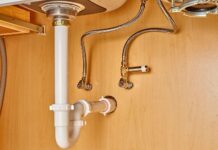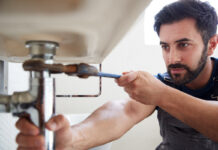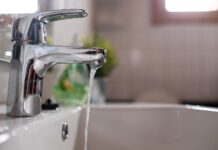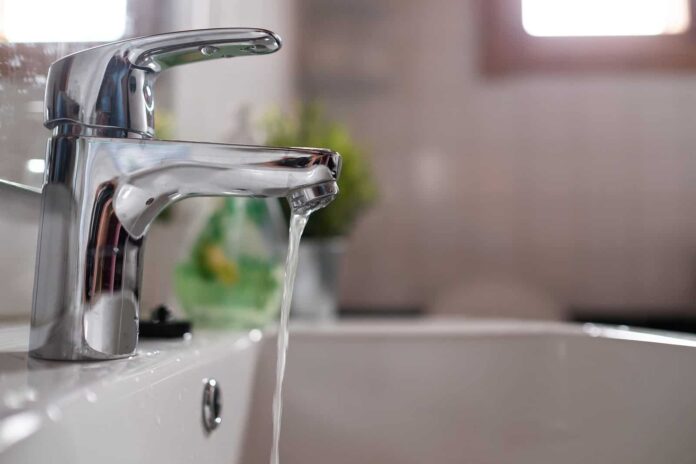
If you take a long time to wash your dishes, you might be blaming it on the wrong thing.
The amount of water that comes out of your kitchen sink depends on several factors besides the amount you turn the faucet. The flow rate of faucets can vary anywhere from less than a gallon per minute to more than three gallons per minute. The right sink water pressure is needed to keep your dishes clean and sanitary.
If you notice less pressure coming out of your faucet, read on to learn some 7 reasons your kitchen sink water pressure is low.
1. You Have a Leak
Low water pressure in the kitchen often indicates that you may have a leak somewhere within your sink or plumbing system. The water pressure in household plumbing is based on water coming through the system at a certain rate, and if there’s a leak somewhere, that water isn’t coming into the system. This is why it’s important to check all parts of the sink and plumbing system for any signs of damage.
If you can detect a leak, you may need to repair it yourself or call a professional to do the job. Leaks can cause a drastic decrease in water pressure, meaning less water is available to the kitchen sink. As a result, it’s essential to check for leaks when experiencing low kitchen sink water pressure and take steps to repair them.
2. Your Water Supplier Is Having Issues
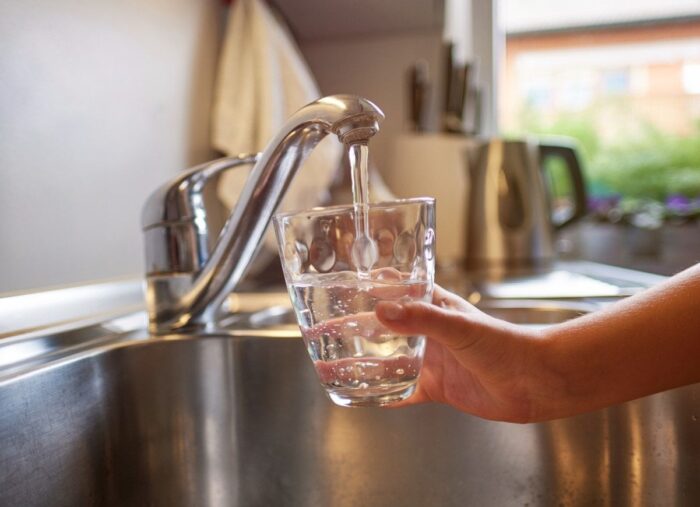
It could be anything from a water main break or low production at their water source. Water suppliers must adhere to certain regulations within state and local standards to provide a safe and adequate water supply free from contaminants. If they are having issues, then the water pressure may be low because they cannot provide the same amount of water as usual.
If the supplier suspects solvent contamination due to their issues, then they may need to cut off the flow of water until it is deemed safe. Low water pressure is a sign that your supplier is having issues, and it’s important to stay informed about the latest news and potential solutions.
3. Your Fixture Is Broken
The sink in your kitchen uses an aerator and cartridge to regulate water flow and pressure. If the cartridge is faulty or the aerator valve is not sealing effectively, the water pressure that comes out of the faucet head may be very low. In some cases, if the cartridge or aerator is completely blocked, no water will come out of the faucet head.
In other cases, the faucet head may be cracked or have an internal seal that is preventing water from coming out. Any of these signs indicate that it is time to replace the sink fixture.
When troubleshooting issues like low water pressure in your kitchen sink, understanding the different sink types and their potential impact can help you pinpoint the source of the problem, as discussed in the related article.
4. You Have a Clogged Pipe
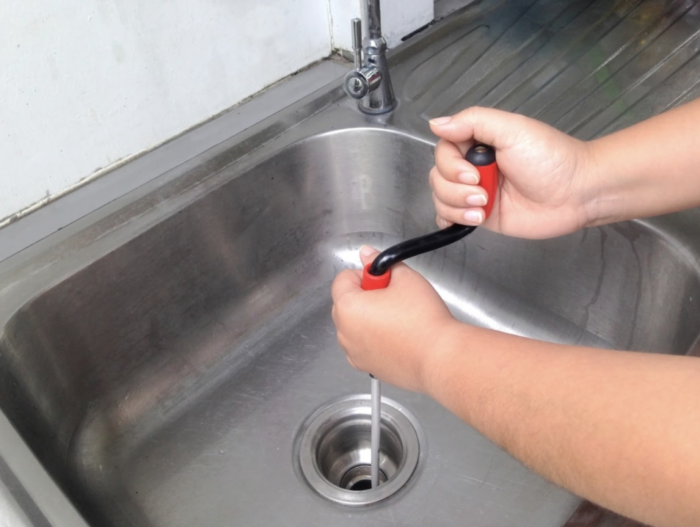
Clogs occur when objects such as food, soap, and other objects become stuck in the pipes, blocking the flow of water. Low water pressure from the kitchen sink might also be linked to calcium deposits or corrosion from hard water. The clog restricts the flow of water to the sink, resulting in the water pressure being reduced.
Water may not even be able to fill the sink basin. To remedy the problem, you may need to have the pipes and faucets inspected for clogs and cleared if needed. If the pressure persists, you may need to consider replacing the pipes and faucets with newer models that are better designed to handle hard water.
5. There Is an Issue With Your Water Valves
If you’ve been experiencing low water pressure in your kitchen sink and have narrowed it down to an issue with your water valves, this means that the valves are either not functioning properly or stuck to allow full water pressure through. It is important to understand that water valves are essential components of the plumbing pipelines and help regulate the water pressure within the property.
The cold and hot valves might be turned off or the valve might be blocked by a debris buildup. Additionally, the valve may be malfunctioning due to age or wear and tear caused by cold temperatures. Cleaning the valves and replacing worn parts can generally repair any issue.
6. Your Pressure Regulator Is Failing
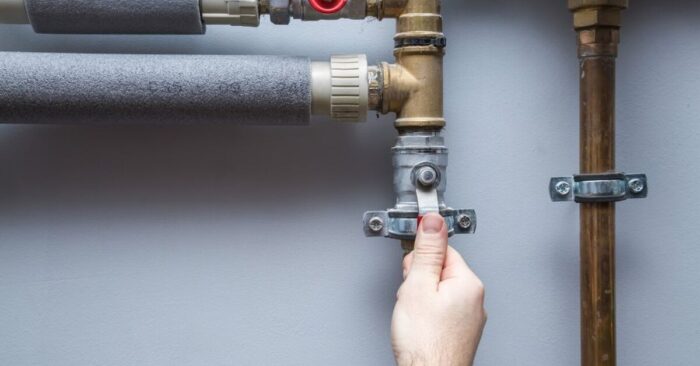
A pressure regulator is a valve that helps to maintain a steady flow of water. If the valve is faulty or blocked, water may take too long to travel through the pipes and come out of the sink faucet, resulting in low pressure. Other signs that your pressure regulator is failing include a sputtering sound from the faucet or the water taking a long time to fill a bucket/glass.
You may also notice a decrease in water pressure as you move the faucet handle from hot to cold and vice versa. If you are experiencing any of these issues, it is important to contact a qualified plumber to inspect your pressure regulator and fix any problems.
When you’re troubleshooting low water pressure in your kitchen sink, it’s essential to remember that starting the journey to your dream kitchen can involve various factors, some of which may impact water flow, as explained in the related article.
7. Your Pipes Are Corroding
Corroding pipes occur when the pipes are made out of a material that isn’t protected from the elements, like iron, and are exposed to water for an extended period. The water erodes the metal and corrodes the pipes, making them slow and inefficient at delivering water. This can lead to a decrease in the amount of water pressure going to the kitchen sink.
Other signs of corroding pipes are water coming out of the pipes with a red-brown tint, water not draining properly, and a strange, metallic taste in the water. To prevent further corrosion, it is important to have a professional inspect the pipes and, if necessary, replace them with ones that are specifically designed to prevent corrosion.
If you are experiencing faucet low water pressure and looking for a certified plumber, you can try visiting Heating and Cooling services or other plumbers available in your town.
Know Why Your Kitchen Sink Water Pressure Is Low
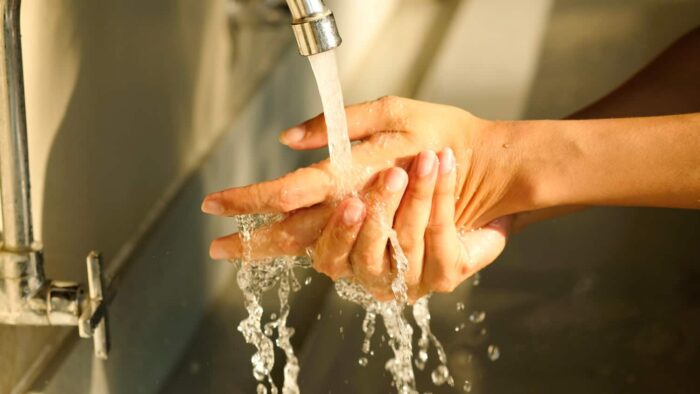
Low water pressure can be a nuisance, leaving your dishes unwashed and your sink area unclean. Identifying the cause and resolving the issue can restore water pressure in no time. Make sure you have sufficient water pressure in your kitchen sink by following these easy steps and keep your hands and kitchen clean.
If you’ve ever wondered why your kitchen sink’s water pressure is low, consider the advantages of employing an under-sink water filter to ensure clean and efficient water flow, as discussed in the related article.
So, if your kitchen sink water pressure is low, take some time now to investigate and diagnose the source of the issue. You won’t regret it!
We hope you enjoyed reading this post and encourage you to browse the other content on our blog.

